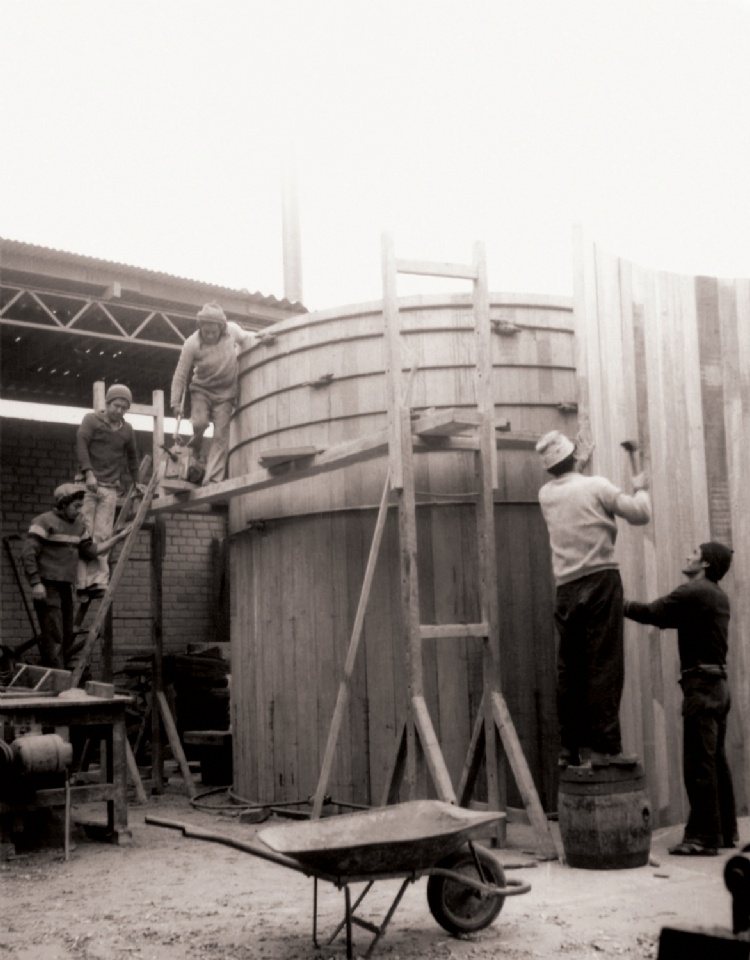DER SOZIOGRAPHISCHE BLICK 12.

Als letzte Position der Ausstellungsreihe „Der soziographische Blick“ zeigt der Kunstraum Innsbruck den peruanisch-deutschen Künstler David Zink Yi. In seiner Bildsprache spiegelt sich seine eigene Identität wieder, die eine melancholische Mixtur zwischen China, Südamerika und Europa beinhaltet. In seiner künstlerischen Arbeit beschäftigt er sich mit Alltagspraktiken wie Tanzen oder Kochen, deren Rhythmen und Bewegungen Ausdruck kultureller Identität sind. Autobiographische Elemente fließen in sein künstlerisches Handeln mit ein und kreieren eine eigenwillige, sehr konzeptuelle Bildsprache. Für den Kunstraum Innsbruck begibt sich Zink Yi auf die Spurensuche seiner familiären Wurzeln. Sein aus Bayern ausgewanderter Großvater nahm die Kunst des Fassbindens mit in die neue Wahlheimat Lima/Peru. Diese dort gefragte Tätigkeit wurde zur Grundlage für die weitere Existenz seiner Familie, deren Nachkommen sowie seiner Arbeiter. Zink Yi reist nach Lima, wo er mit seinem Vater nach einem von seinem Großvater ausgebildeten Fassbinder suchte, um dann mit ihm nach überlieferter Handwerksmanier eine raumgreifende Skulptur in Form eines Holzfasses fertigt. Diese 1890 kg schwere, zerlegte Skulptur kommt über den Schiffsweg nach Hamburg und per Spedition nach Innsbruck, wo sie zusammengebaut und als Kunstwerk präsentiert wird. Dokumentationsmaterial dieser „Reise in die Vergangenheit“ begleitet die Ausstellung. Der Kunstraum Innsbruck zeigt erstmals eine Personale des Künstlers David Zink Yi in Österreich.
... When I started working with your grandpa, I was selling vegetables in the market and I had never worked with wood. I was 17 years old. We were around ten workers and he taught us all how to work with wood, to make these barrels and wooden pipes. These are the same techniques I’m teaching you now. I knew your grandpa had come to Peru to work at Backus & Johnston, the brewery that still exists. They hired him because they needed an expert in barrel making, at that time this craft didn’t exist here in Lima.
... the most difficult thing was to understand wood as a material. It requires a lot of dedication and knowledge that I didn’t have, but I did learn with time. Later came the different shapes, radii and curves.
The small barrels were made almost completely by hand. Later, machines were bought.
... the factory where I started working was not in Callao, it was in Pueblo Libre. But in the end it was too small because we began making barrels for different lines of industry, like the chemical and leather industries. So little by little the barrels became bigger and bigger ... Even the big factory in Callao ended up filled up with different size and shape barrels. That was the time I remember seeing you for the first time. You were about four or five years old. I remember that as soon as you’d arrive with your dad, you’d run around the barrels. As I told you some of them were really big, gigantic. You would usually play hiding in them, you would go into the biggest ones, inside them you would fall asleep and then no one could find you ...



